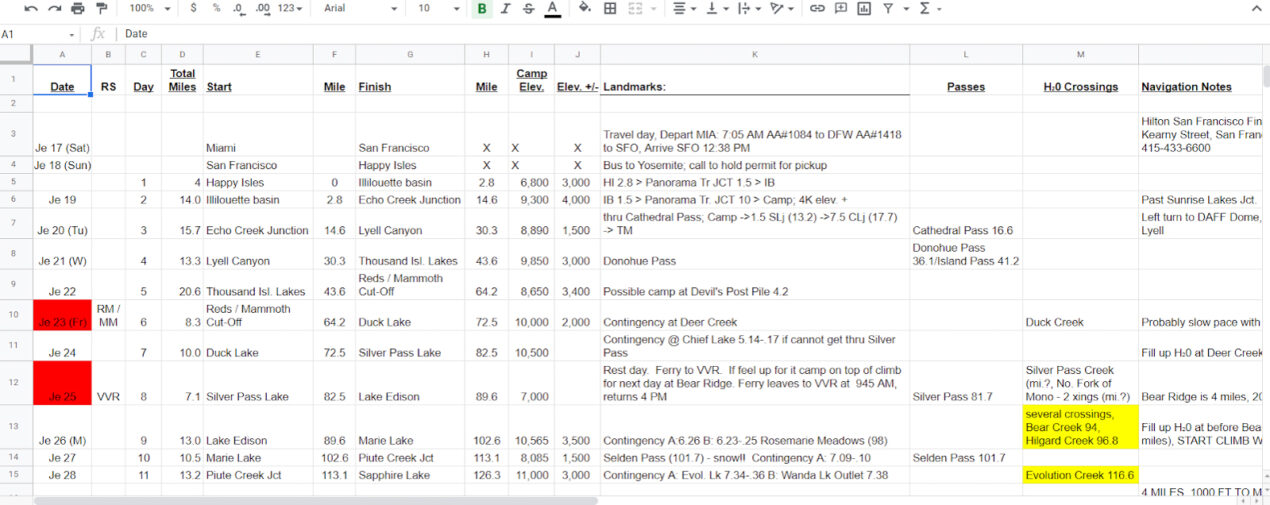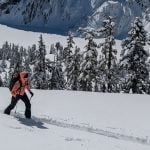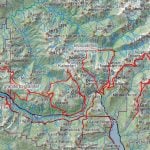The Art of the Spreadsheet
Tips for Methodically Organizing Your Adventures
It’s 5:30 AM, dark, and I’m already late getting out the door for a day of ski touring! I text my touring partner that I will be a few minutes late to our meet-up point, as I rush to throw my poles, skis, and pack in the car. As I am driving, sipping my morning coffee I realize…I FORGOT MY CLIMBING SKINS!
Has this ever happened to you? Alright…maybe not the climbing skins, but have you ever forgotten something on a trip? Organization can be difficult, intimidating, and downright impossible at times, especially if your trip is longer than a day out from the house.
Time and time again, I rely on spreadsheets as the foundation for my trip planning. They serve as my checklist and organizational tool to plan out gear, food, itinerary, and budgeting for longer trips into the mountains. Below I will go over three useful points for trip planning, and why spreadsheets should be considered an artform.
- Why make a spreadsheet? What’s the benefit?
- What kinds of trips are they useful for? What is the “threshold” for making a spreadsheet?
- What types of tools do I use? What are some examples of spreadsheets I have constructed for trip planning?
Why Make a Spreadsheet?
The purpose of a spreadsheet is to document all your thoughts in one place. For trip planning, this normally comes in the form of: gear lists, food lists, and schedule/itinerary.
Gear Lists
I like to write down all the gear I think I may or may not need for a trip. I will try and list out details such as:
- Quantity Needed
- Weight (ounces or grams, usually)
- Make/Model (especially if I am sharing the gear list with someone else)

Food Lists
Especially on trips longer than 3 days, I like to write out all the food requirements I will have, such as:
- Calories Needed
- Weight of food, in oz.
- Number of meals/snack per day
- Macronutrient breakdown per day (i.e. carbs/protein/fat)
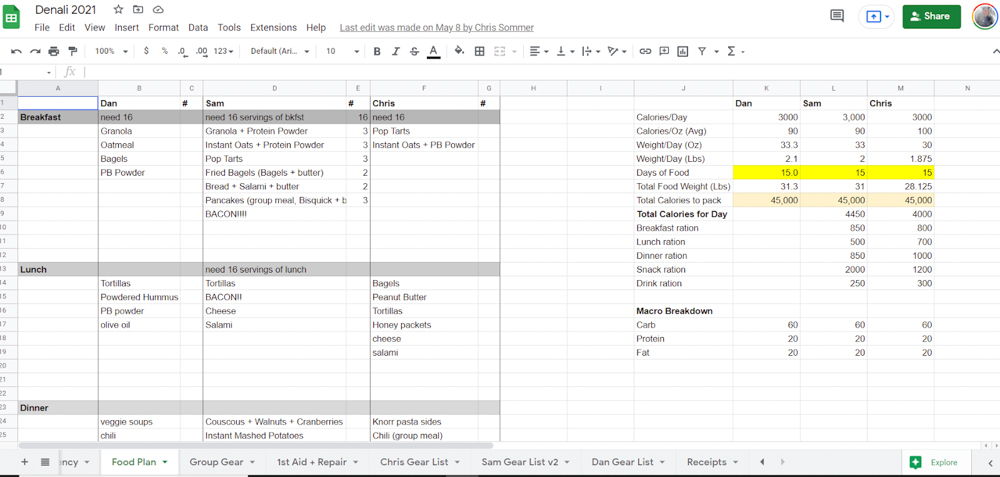
With these base data points, I then try and list out a meal plan, and see how it compares to what my numeric goals are for the trip. If I find that I over estimated my needs, I pare it down. Often, though, I find I need more food than I expected.
Itinerary
If a trip is going to be longer than 3 days, it probably means you will be taking time off from work or family. Understanding your time requirements is key to planning your flights, re-supply of food, etc.
I like to lay my itineraries out day-by-day, with bulleted notes on the side for more specific details. For example, if I have a flight, I list out the flight number, departure and arrival times. If I have a shuttle to a particular trailhead, I’ll list out the bus route number, departure times, etc. If it’s a hiking trip, I’ll list out mileage, elevation gain, etc.
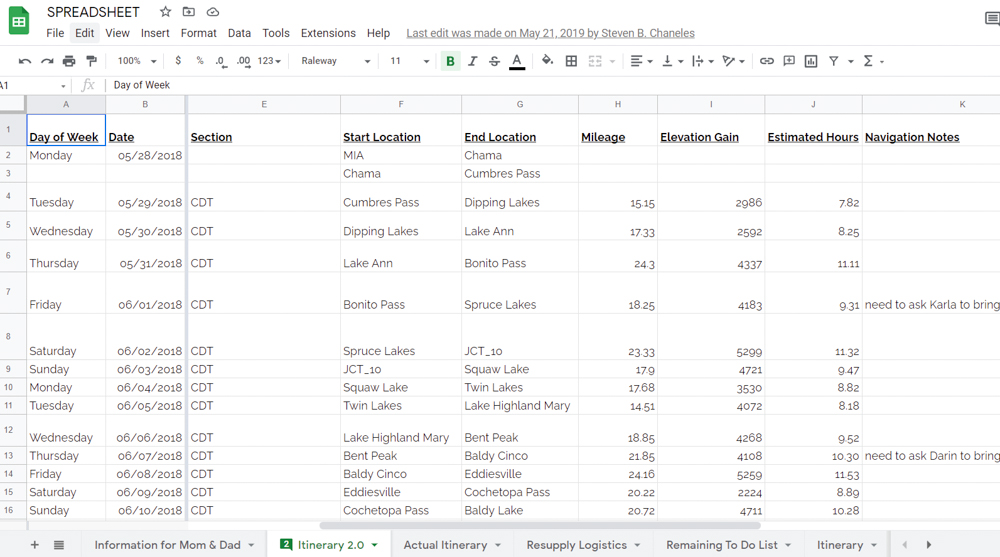
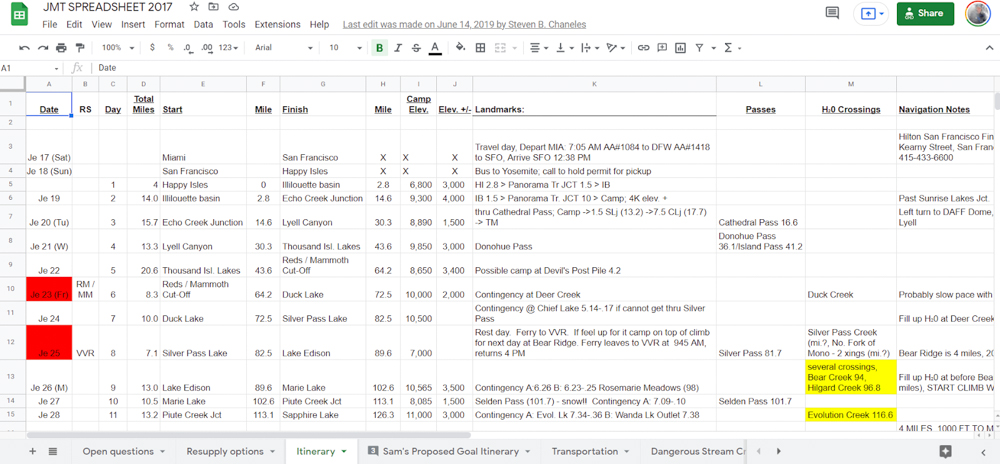
What is the ‘Threshold’ for Making a Spreadsheet?
Do you need to make a spreadsheet for EVERYTHING? No…definitely not. Over the years I’ve trended towards making less and less spreadsheets as my knowledge of gear, food, and logistics has improved through experience.
My general rule of thumb is ~3 nights: if a trip is longer than 3 nights, I make an organizing spreadsheet with a general outline of the itinerary, list out gear requirements, and lay out my food needs. Less than 3 nights and I either just pack things together from memory or use a quick Google Keep note to jot down the “essentials”.
What Types of Tools to Use?
In general, I rely on the Google Suite of Google Sheets, Google Keep, and Google Drive. For those of you who aren’t familiar with Google…
- Google “Drive” is the storage platform that houses different applications such as:
- Google Docs (a Microsoft Word equivalent)
- Google Sheets (a Microsoft Excel equivalent)
- Etc.
- Google “Keep” is an application for note taking. You can make notes with bullets or checklists as well.
In general, if I am planning a more complicated trip, I will create a folder in Google Drive, where I store:
- A Google Sheet with my gear list, itinerary, and food list
- Copies of any receipts, permits, or PDFs related to my trip
- PDF printouts of any maps for the area
I will often share this folder with my partners for the trip so that we can all collaborate on the documents together.

For shorter trips, I will put together a Google Keep note for myself with a basic checklist of the key items. For example, for a day of ski touring, I’ll make a note that might look like the following:
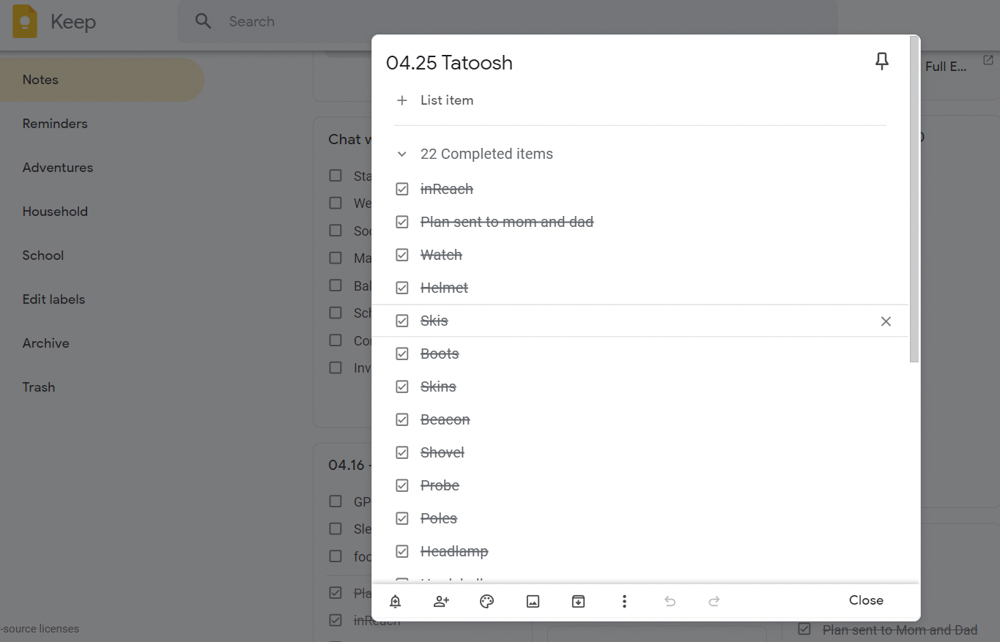
A day of trail running will look a bit different:
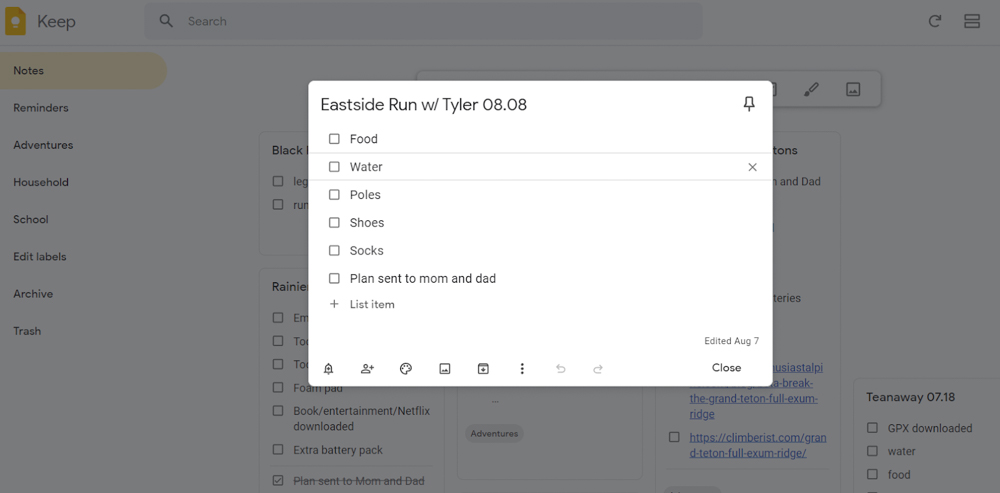
Wrapping It All Up
Spreadsheets can be a useful organizational tool for adventures requiring more thought, preparation, and logistics. Whether you prefer to write it out on an actual piece of paper, or prefer Google Docs, Excel, or other digital tools, the process itself is very valuable in organizing your thoughts.
Here are a few interactive examples you can download to start making your own spreadsheet (hint: take a look at all the tabs).
Long Distance Hiking
Mountaineering
Reach out to me at [email protected] with any questions, I’m happy to share!
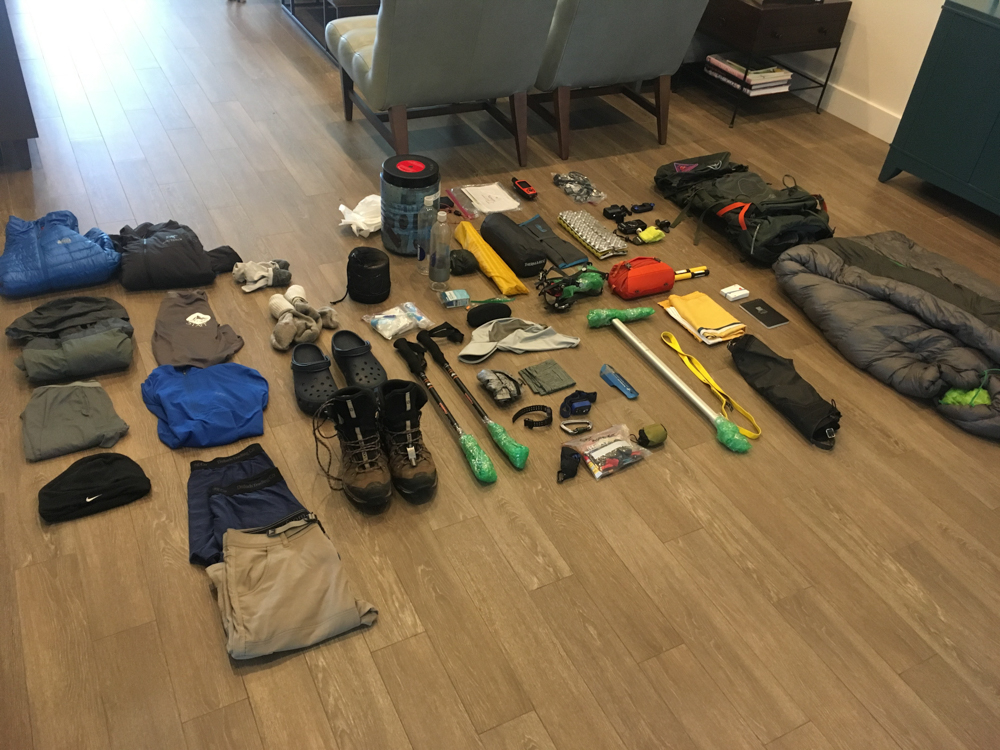
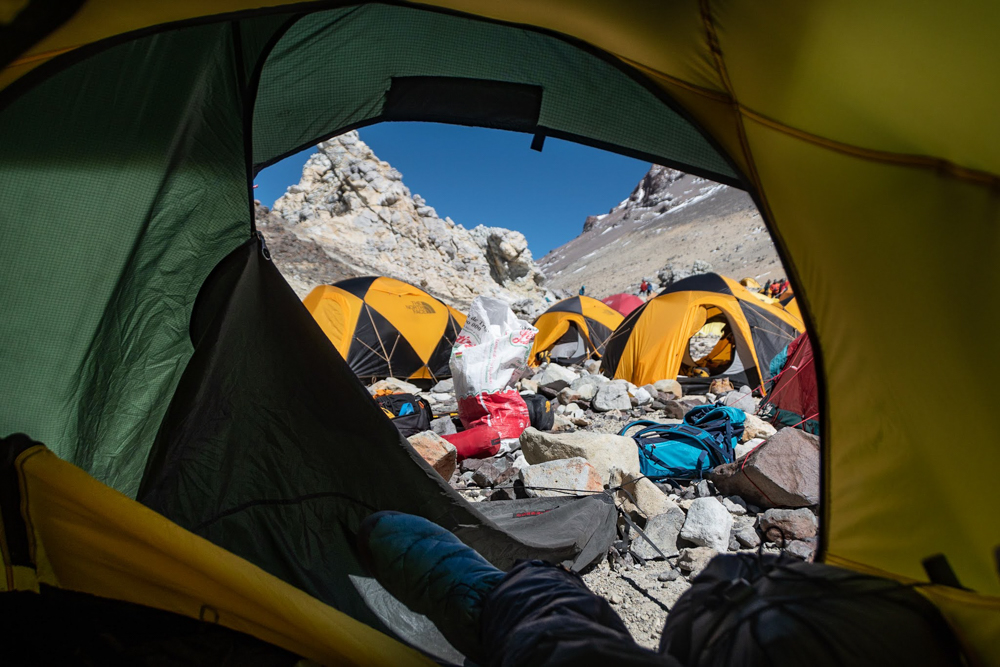

About the Gear Tester

Sam Chaneles
Sam Chaneles is an avid mountaineer and backpacker, climbing peaks in the Cascades, Mexico, Ecuador, and Africa, as well as hiking the John Muir Trail and off-trail routes in Colorado. He has climbed peaks such as Aconcagua, Mt. Rainier, Cotopaxi, Chimborazo, Kilimanjaro, and many more. Sam graduated with a B.S. in Mechanical Engineering from Georgia Tech. During his time there he was a Trip and Expedition Leader for the school’s Outdoor Recreation program (ORGT). He has led expeditions to New Zealand, Alaska, Corsica, France, and throughout the United States. Sam is based in Issaquah, WA just outside of the Cascade Mountains. You can follow Sam and his adventures on Instagram at @samchaneles, or on his website at www.engineeredforadventure.com.

